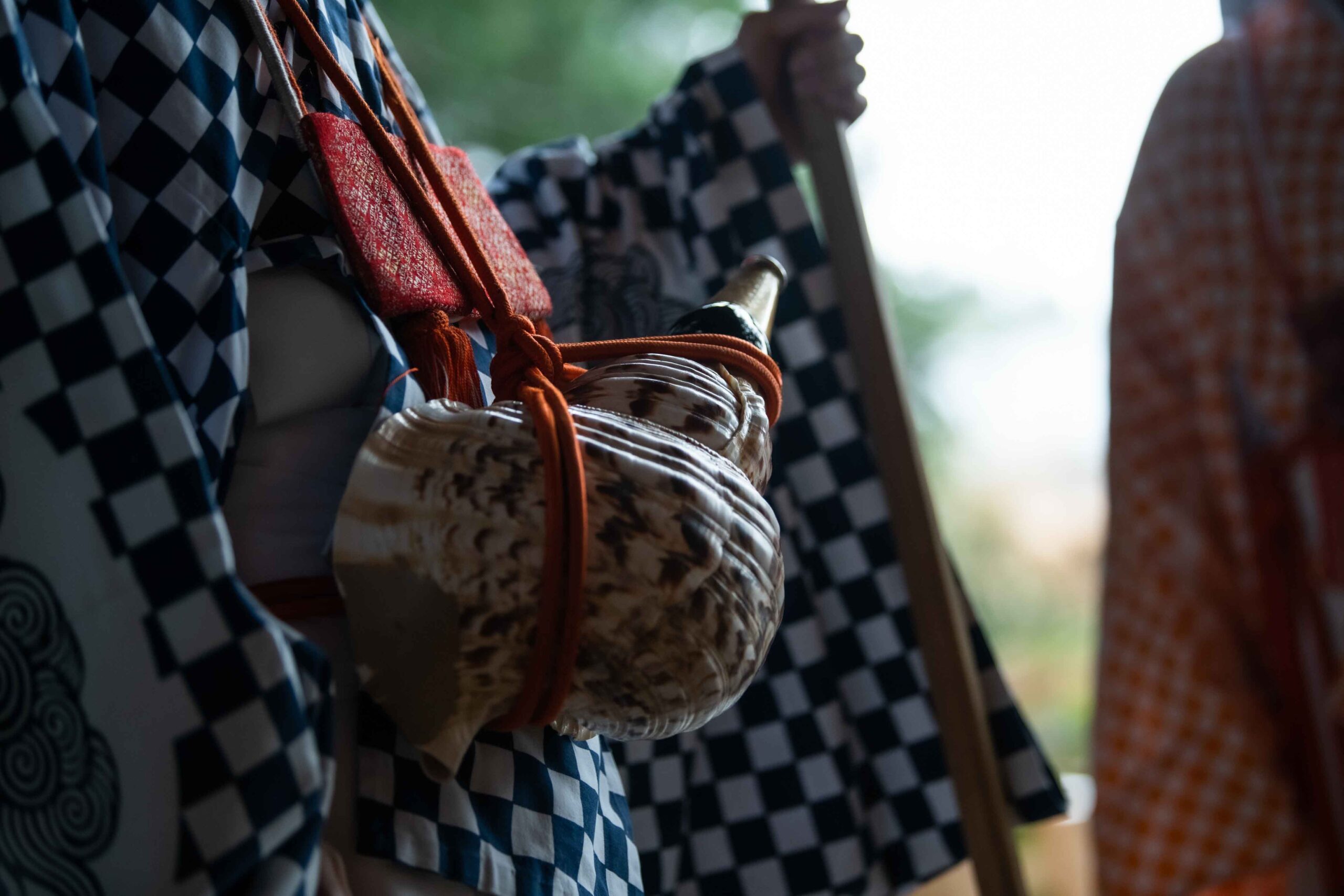
A Dewa Sanzan Yamabushi speaks!Unknown Facts Revealed.
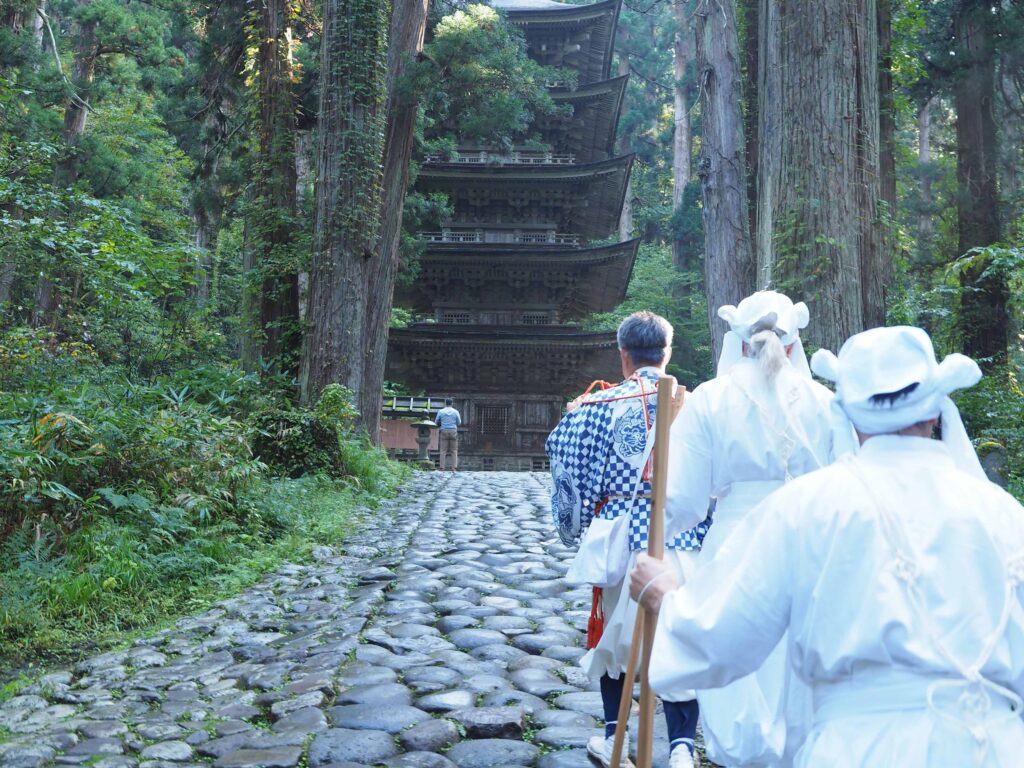
To the center of what used to be Dewa Province (now in Yamagata Prefecture), for more than 1,400 years, from near and far, pilgrims have come seeking spiritual power through hardships on the three mountain peaks called Sanzan. Coming from local Shōnai, from all over Japan and now, from the whole world, on Haguro (414 m), the lowest mountain, pilgrims come to pray for present happiness. On Gassan (1,984 m), adherents exert themselves to atone for past misdeeds, and to comfort departed souls and pray for their rebirth. Practices on Yudono (1,504 m) focus on rebirth into a new life. Dewa Sanzan is a place where you can be reborn.
The three mountains were originally revered by practitioners who seek spiritual strength through rigorous ascetic training. These worshippers are known as yamabushi. Ordinary pilgrims also began to make spiritual journeys here. During the peaceful Edo period (1603–1867), Dewa Sanzan ranked along Ise Grand Shrine as a destination for a once-in-a-lifetime pilgrimage.
Even now, from Japan and overseas, the sacred mountains attract many people who come to experience the ancient Japanese spiritual connection with nature.
Yoshizumi-san of Dewa Sanzan Shrine was born and raised in a family that has been running a pilgrim lodge for generations. He is himself a practicing yamabushi: in an interview, he agreed to share some of his extensive knowledge about Dewa Sanzan yamabushi.
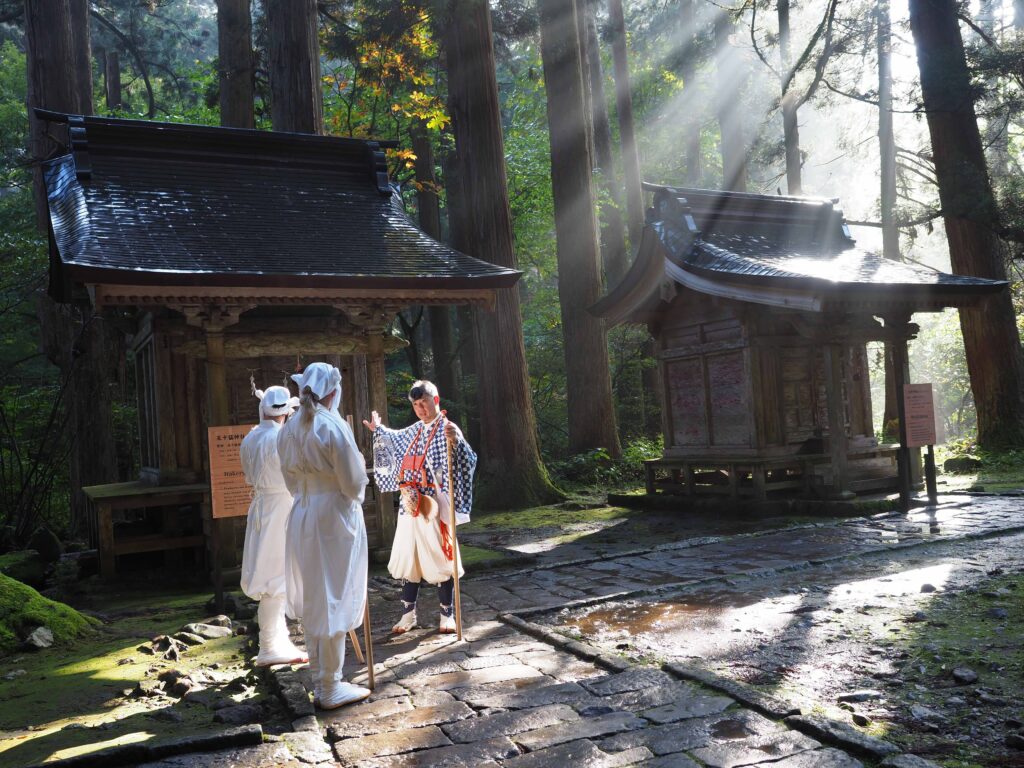
Ascetic Training Activates Latent Powers
Q. What kind of people are yamabushi?
A. Yamabushi follow the practices of Shugendō, which holds that self-knowledge and spiritual power can be gained by testing yourself. Combined with ancient Japanese folk beliefs about mountains, Shugendō has drawn on Shinto, Tantric, Taoist, and yin–yang beliefs. The mountain itself is understood to be a manifestation of Buddha or other divine power: ‘yama’ and ‘bushi’ literally mean ‘mountain’ and ‘on all fours’ (as in prayerful prostration).
Traveling around on mountains, yamabushi worship trees, rocks, and other natural objects in which spiritual power dwells. By performing rites, undergoing physical exertion, and other hard-to-endure ordeals, such as exposure to cold waterfalls, yamabushi seek to draw out latent human abilities and increase their spiritual power.
Q. When did yamabushi first appear in Dewa Sanzan?
A. According to legend, after his father Emperor Sushun was assassinated, Prince Hachiko made his way to Dewa Sanzan and devoted the rest of his life to yamabushi rigors on the mountains. That was in 593, over 1,400 years ago. Around this time, En no Ozunu was organizing Shugendō as a doctrine. He is also said to have trained on these three mountains.
Q. Did Dewa Sanzan really once rank alongside Ise Grand Shrine as a place of pilgrimage?
A. The Dewa Sanzan peaks were once held to be the guardian mountains for all the 33 provinces of Eastern Japan, including Musashi where the shogun located his capital Edo. Mt. Gassan enshrines Tsukuyomi-no-Mikoto, moon deity and younger sibling of Ise Grand Shrine’s sun goddess Amaterasu Ōmikami. Edo-period guide books even advised that if you make a pilgrimage to the sun, you should also make one to the moon. While the moon may be junior to the sun, Dewa Sanzan was obviously a very popular place of pilgrimage.
Q. Did so many people really walk hundreds of miles from Edo (present-day Tokyo) to get here?
A. Historians estimate that in pre-modern times there were 330 pilgrim lodgings in Dewa Sanzan.
Shugendō has a division of territories into ‘parishes’ called kasumiba. Official pilgrim lodgings in each kasumiba were licensed. For a region extending from Aomori in Northern Honshu down south as far as Edo (Tokyo), these were issued by Jakkō-ji Temple (currently Dewa Sanzan Jinja Shrine) on Mt. Haguro-san.
Q. Haguro-san is supposed to be the abode of tengu. Is there some kind of relationship between yamabushi and tengu?
A. Tengu are, indeed, associated with mountains and mountain beliefs, not only on Haguro-san but also on other mountains sacred to Shugendō, such as Takao-san in Tokyo and Kurama-yama in Kyoto. With their ability to fly among trees and freely manipulate the powers they possess, tengu symbolize the goals of yamabushi. You could say a tengu is what a yamabushi aspires to become.
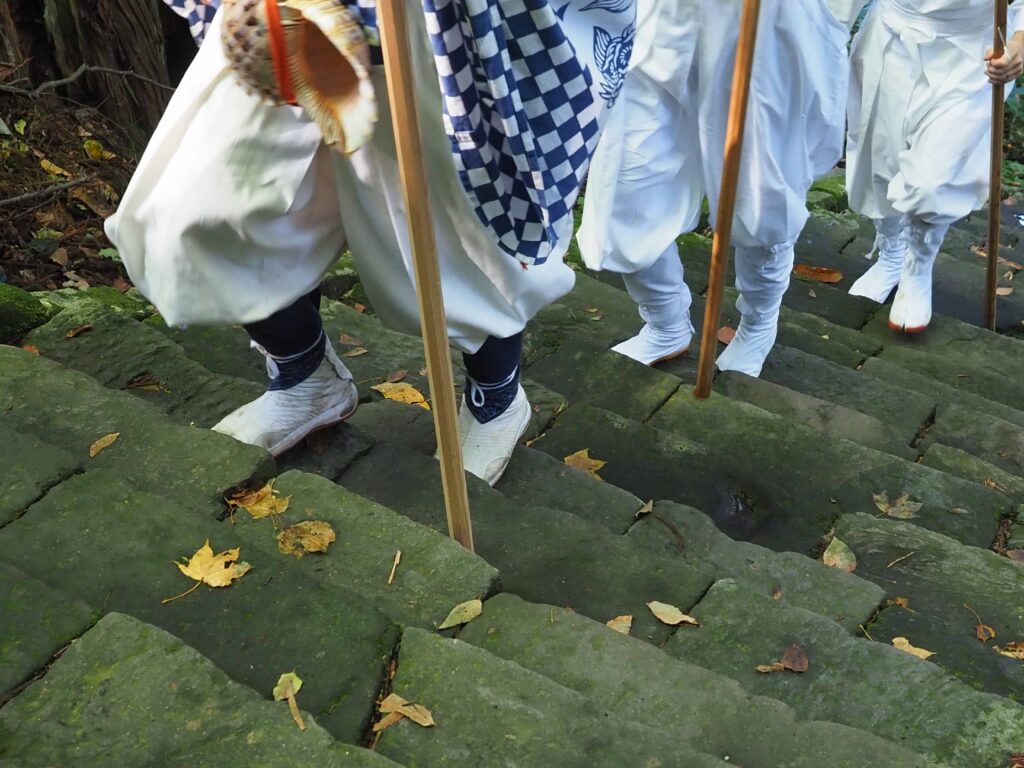
Uketamō: Acceptance of both hardship and pleasure
Q. Why do yamabushi keep saying “Uketamō”?
A. Uketamō expresses acceptance. Whatever happens, we say, “Yes.” We do not say, “No.” This is our attitude toward the Buddha and towards the spirits of nature. Even if told you will, sometime soon, die, you just accept it. During training some experiences are pleasurable and some are painful, both should be accepted in the spirit of uketamō.
Q. What happens in the initial novice training?
A. I am not allowed to disclose all the details. I can say that it is a type of reincarnation training. After a death ceremony, that is, funerary rites, as a symbolic sperm you enter the ‘womb’ of the mountain and undertake rigors to grow and achieve rebirth.
Mainly, novices walk a circuit on the mountain, pray at assigned places, and participate in rites at the komoridō shrine. On the mountain, you push life to its extremes, for example, by putting off eating and sleeping. This deprivation, revealing hidden reserves, both sharpens your five senses and draws on your latent human powers.
For example, you probably eat rice as a matter of course. When you are really hungry, however, you feel each grain of rice, notice its sweetness, and feel gratitude for the food.
Perhaps the greatest benefit of this training for people today is to make you more greatly appreciate things you take for granted in everyday life. In the past, the concern was more to challenge personal endurance in the hope of gaining special powers.
Q. How can an ordinary person experience yamabushi training?
A. The mountain is seasonally open for guided training. Currently, this is limited to three times a year. The autumn peak training is probably best suited to novices who want to release latent power and increase their spiritual resilience.
Participation is limited to men in good health whose families also consent. Documents must be submitted. The hall where rites are held can only hold 150 people and there may be as many as 400 applicants for autumn peak training. If there are more applicants than places, final selection will be made by oracle in front of the altar or by lottery.
Q. How about women and people from overseas?
A. In the old days, women were not allowed on the mountain. Times have changed, however, and miko shugyō women-only training is held during the time of autumn peak training. Basically, they seclude themselves in a mountain temple and undergo austerities.
While it may seem strange that people brought up in monotheistic traditions could be attracted to Shugendō, a doctrine in which seemingly divergent beliefs coexist in harmony, many people from North America and Europe have already undergone training. Instruction is by example and language is unimportant. Just go with the flow: uketamō (accept) is the only word you need to know.
Q. What do yamabushi eat?
Out on the mountain, yamabushi abstain from meat and fish. We eat simple shōjin ryōri style vegetarian food. A typical meal would be a bowl of soup and a vegetarian dish. In everyday life, unless a Buddhist monk who has dietary restrictions, yamabushi can eat whatever they like.
On Mt. Haguro, food is consumed with the intention of receiving the spirit of the mountain. While it is possible to get all the protein the body needs in food foraged from the mountain, it is not what you would call luxurious. When undertaking a hundred-day austerity on the mountain, people who normally eat plenty of meat and fish find they feel weak for the first few weeks. Once the body adjusts to the diet, however, they can move with accustomed vigor. This reveals latent potential and demonstrates the merit of a vegetarian diet.
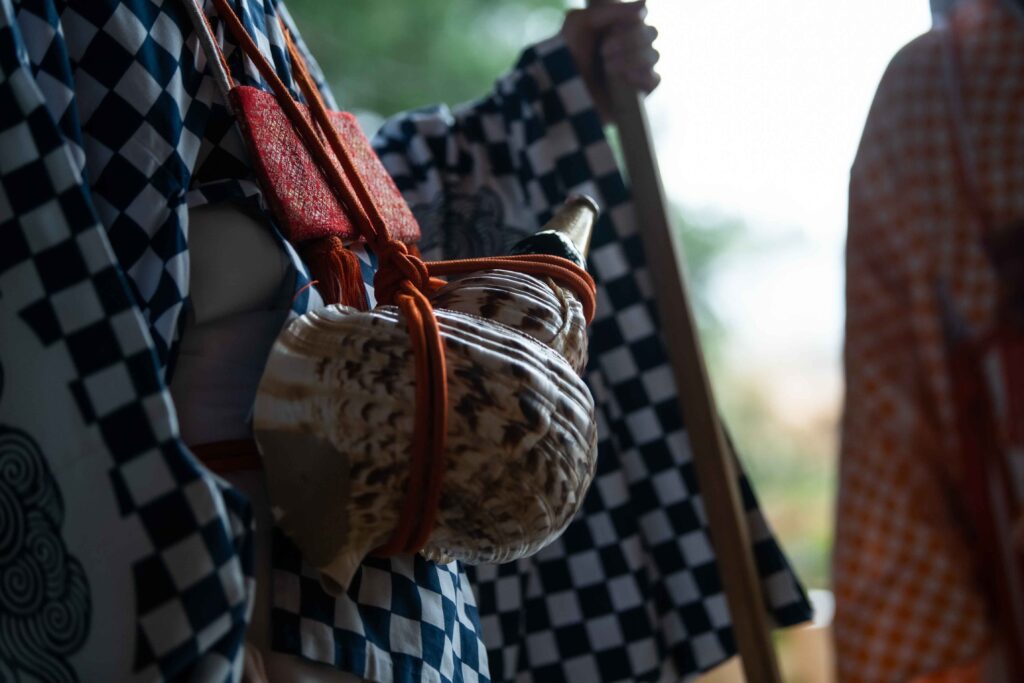
Suri: Absorbing Natural Energy through Clothing
Q. Why do yamabushi wear white clothing?
A. White signifies an unblemished state of purity. For example, newborns are swaddled in white, and white was also used for wrapping the bodies of the dead. White is the color of rebirth.
Practitioners of Haguro Shugendō associate Mt. Haguro with the present, Mt. Gassan with the past, and Mt. Yudono with the future. While climbing the three peaks in the Sankan Sando circuit, appropriate to rebirth as a new soul while living, pilgrims wear white.
Over the white clothing, yamabushi wear a garment called suri-goromo [rubbing garment]. In some places, the outer garment bears plant motifs recalling the original material, which included layers of leaves from different trees. Depending on local traditions with their different Buddhist and Shinto influences, the patterns and colors vary by parish. Haguro yamabushi wear a checkered suri-goromo. To better absorb natural energy from the mountain, the wearer rubs this outer layer on objects such as rocks and trees.
Q. What is that rope thing that some yamabushi have?
A. Only in Dewa Sanzan do yamabushi have oshime ropes. It is a highly abbreviated version of the ceremonial garb called kamishimo. The purpose of the rope is to purify the body and create a sacred precinct around the wearer, a barrier that prevents the entry of evil spirits that may be lurking on the mountain.
During your trip to Dewa Sanzan, I believe that your body will feel more braced if you wear an oshime. It will make a good trip better. In former times, the housekeepers in the pilgrim lodgings made them for pilgrims coming to the kasumiba parish. Now, they are given to anyone who climbs all 2,446 stone steps up Haguro-san and are taken home as souvenirs.
Yamabushi and their Conch Shells
Q. I see yamabushi carrying conch shells. What purpose do they serve?
They were originally used for signaling. Yamabushi often carried out their activities alone on the mountain. Depending on how the shell was blown, the sound might warn others of imminent danger or summon yamabushi to a gathering.
Gradually, the conch came to be used for exorcism and to ward off evil. This use is not limited to yamabushi and, in some places overseas, they are even used as musical instruments. Along with animal horns, shells are precursors of modern wind instruments.
Q. Conches live in the South Seas. How did yamabushi get them?
A. At Kumano near the southern tip of Wakayama Prefecture, there is a famous waterfall and mountains that attracted yamabushi. The coastal waters there are semitropical and conches are thought to have spread from Kumano via a loose nationwide network of yamabushi. Even though there was rivalry and sometimes conflict between groups, it seems that yamabushi ultimately respected each other.
Q. How hard is it to blow a conch shell?
A. It certainly isn’t easy! If you have played a brass instrument, you can get good at it more quickly. Even so, conch shells are blown in a completely different way. For most wind instruments, without puffing up the cheeks, you engage both lips and blow directly into the tube. To get a sound out of a conch, you have to puff out your cheeks and blow from the side. I used to play a wind instrument and it took me a few months to get predictable sounds. Some people take as long as a year.
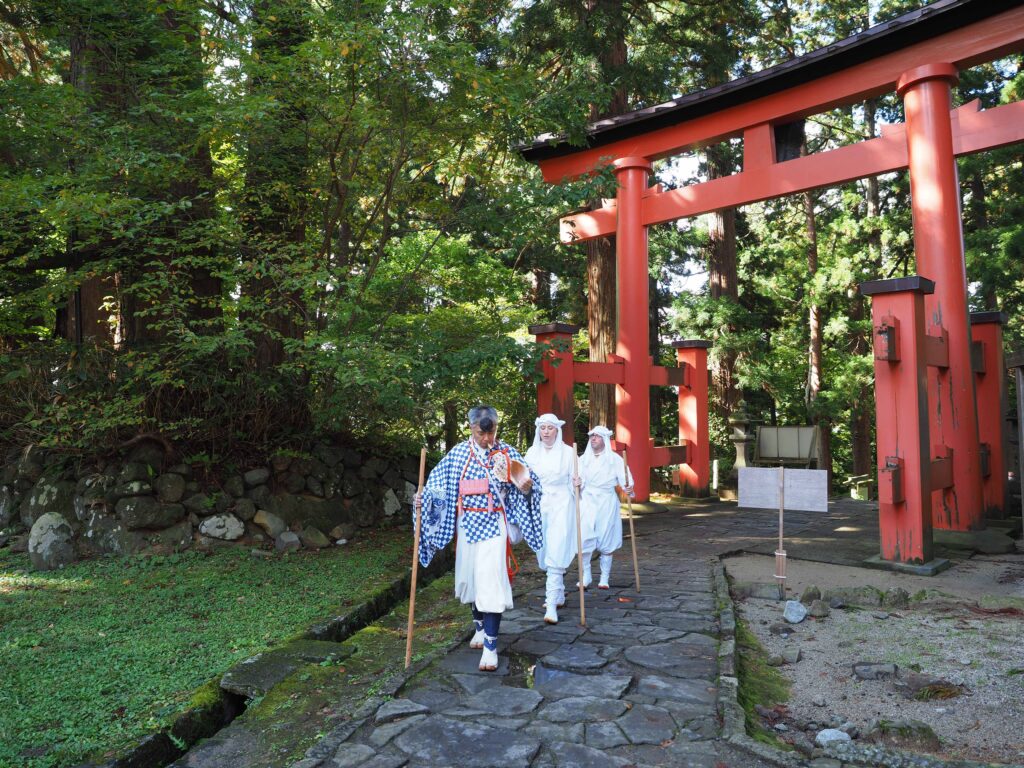
Near a Yamabushi You Can Feel Closer to What Is Divine
Q. Is it OK to talk to yamabushi?
A. When in training, interaction is not welcomed. During training, however, a yamabushi is unlikely to be in a place where lay people normally venture. Since preaching is also part of training, if you encounter a yamabushi, please feel free to talk to them. You will find, however, that most are not very talkative.
If you walk a while with a yamabushi, you will feel closer to nature and closer to the gods and the Buddha. I believe that as many people as possible should, through contact with yamabushi, get a greater appreciation of nature and the importance of simply feeling grateful.
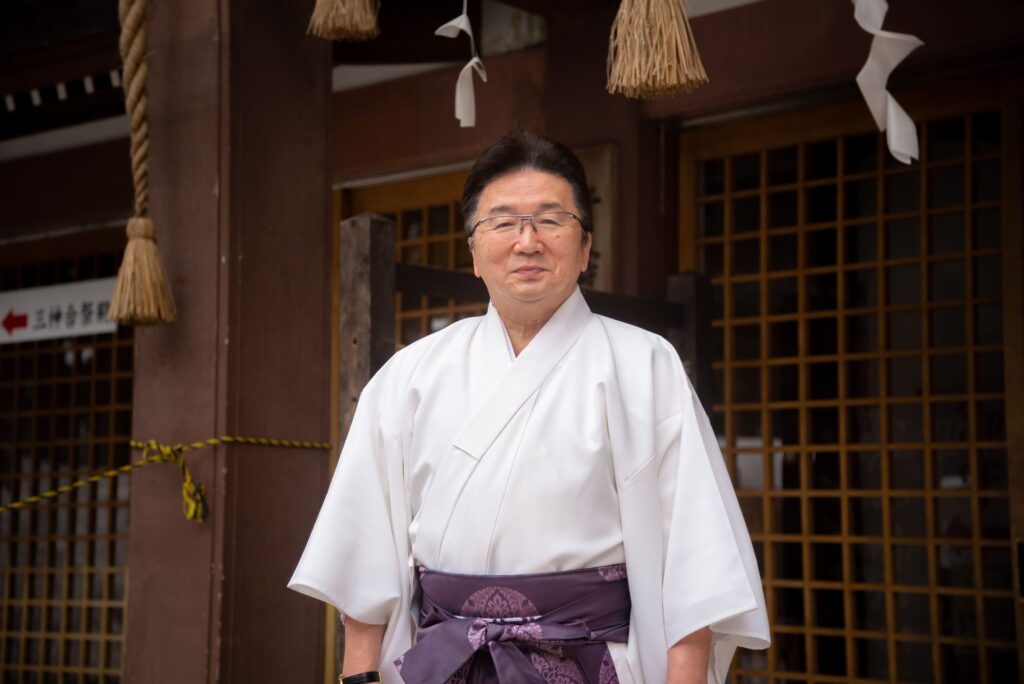
| Other Articles | Walk with YamabushiJourney to Rebirth: Dewa Sanzan |
Information
| Related Pages | Dewa Sanzan、 Mt. Haguro |
|---|
